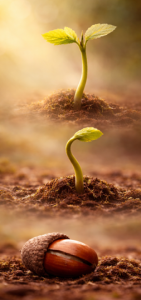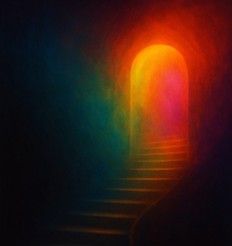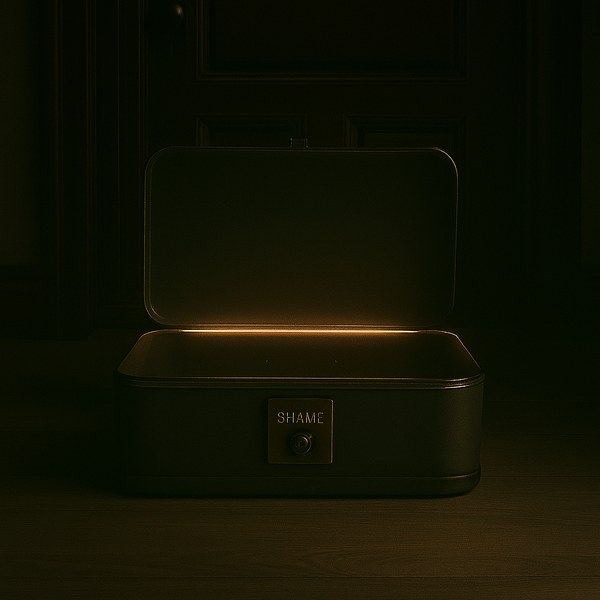
Reflective Questions
What grew for you this year?
What changed, even a little?
What are you carrying forward to 2026?


Reflective Questions
What grew for you this year?
What changed, even a little?
What are you carrying forward to 2026?

These days can feel loud.
Not always in noise, but in expectation, where you should be, who you should see, how you should feel. For some people, this time brings comfort and closeness. For others, it brings tiredness, grief, loneliness, or a sense of being slightly out of step with everyone else. And for many, it is a mix of all of it.
If you are finding it hard to keep up, you are not alone.
There has often pressured to be cheerful, generous, available, even when your own energy is running low. It is easy to forget that looking after yourself is not something extra you have to earn. Sometimes it is the most necessary thing you can do. That might look like stepping outside for a few minutes. Letting yourself sit quietly without scrolling. Saying no without explaining yourself.
Kindness does not always show up in big gestures. Quite often, it is in small choices, how you speak to yourself when things do not go to plan, how patient you are with someone else who is carrying their own load. A message sent. A moment of listening. Not trying to fix everything.
Gratitude does not require refinement. It does not eliminate sadness or longing. It can appear in routine elements: a warm drink, a familiar presence, a shared moment of humour, a temporary sense of calm during activity. Gratitude can be real without being forced.
Helping others does not always mean doing more. Sometimes it means slowing down enough to notice. Letting people be where they are. Offering understanding rather than advice.
If this time feels mixed or complicated for you, that is okay. There is no correct way to experience it. No standard you need to meet.
Take a pause where you can.
Be kind, to yourself as much as to others.
Let things be imperfect.
Sometimes that is more than enough.

We often mistake bullying for conflict, a disagreement between equals, a moment of friction. But bullying is something else entirely. It’s intentional, repeated harm, rooted in power imbalance. And its effects don’t vanish when the bully does.
For many, bullying leaves a legacy of shame, isolation, and mistrust. It shapes how we see ourselves, how we relate to others, how safe we feel in the world. Children carry it into adulthood. Adults carry it into their relationships, their workplaces, their sense of self.
Healing begins with recognition. It means naming the harm, validating the pain, and helping restore a sense of safety and agency. That might involve building boundaries, strengthening support, or gently working with the systems that allowed it to happen.
Bullying is not a moment. It’s a wound. And with care, it can be healed.
If this speaks to your experience, or someone you care about, know that you’re not alone. There is support, and there is a way forward.

Some forms of harm leave no visible trace. They arrive quietly, through tone, timing, and unspoken rules, gradually reshaping a person’s sense of self. There are no dramatic scenes, only the slow erosion of expression. Over time, one learns to minimise their needs, doubt their memory, and apologise for existing “the wrong way.” This isn’t conflict or disagreement. It’s an atmosphere that makes someone smaller, day by day.
How Subtle Harm Operates
This kind of harm often travels through micro-signals: a look that diminishes, a sigh that shames, a “correction” that subtly rewrites events, or a shifting of goalposts so one is never quite right. The message is consistent: You’re too much. You’ve misunderstood. You should be easier. The result is predictable: self-doubt, hypervigilance, and a carefully curated self designed to avoid repercussions.
What the Body Remembers
Even when the mind rationalises, the body keeps score. Jaw tension, shallow breathing, disturbed sleep, loss of appetite or comfort eating, and difficulty making decisions are not signs of weakness. They are data. An internal alarm that something in the relational environment is quietly costly to one’s integrity.
Psychological Consequences
Left unaddressed, this atmosphere erodes self-trust and narrows life. People may withdraw from friendships, silence their creativity, and abandon activities that once brought meaning. Over time, it becomes harder to distinguish genuine accountability from coerced conformity. Shame often sits at the centre, quiet, corrosive, and convincing.
Why This Matters Clinically (BACP Lens)
Within the BACP Ethical Framework, several principles speak directly to this:
In clinical work, our BACP stance is not extra, it is the scaffold. We hold non-maleficence by avoiding subtle collusion with shrinking patterns, and we centre autonomy by restoring the client’s naming, boundaries, and choice. With fidelity and beneficence pacing the work, and self-respect maintained through supervision and limits, we create conditions where one small, safe step can be taken and kept.
Clinical Considerations for Therapists
Guidance for Readers and Students
Moving Toward Repair
Recovery begins with a modest yet firm ‘yes‘ to one’s own reality. It rarely starts with explosions. It starts with clarity, continuity, and compassion. When people can track their emotions, name what they see, and take one small action to protect their dignity, the machinery weakens. The aim is not to win an argument about truth, it is to live in a way that honours it.

Many people suffer in silence, not because there is nothing to say, but because there is too much.
The image of a quiet suitcase, half-open, speaks for what words often cannot: the careful packing away of blame, denial, coldness, and control. The way shame is stitched into the lining while the outside remains polished and respectable. A suitcase, oval and elegant, sits quietly on the floor, open, but not exposed. Inside, small words rest where clothing might once have been avoidance, denial, protection, anger, blame, cold, abandon, integrity. Etched faintly inside the lid is one word that ties them all together — shame.
This image invites us to pause.
It asks what we hide, what we carry, and what we present to the world. The suitcase becomes a metaphor for the psychology of abuse, not just physical, but emotional, psychological, and relational. On the outside, it is polished and respectable; it looks harmless, even appealing. But open the lid, and we glimpse the defences, the distortions, and the pain that lie beneath.
For those who have experienced or witnessed abuse, this image speaks without needing to explain. The abuser often appears charming, warm, attentive, and admired. Beneath the surface, however, lie layers of avoidance, denial, and blame. They pack away their shame, disguising it beneath a façade of control.
Integrity, that fragile quality of wholeness, lies buried under the weight of self-protection. And yet, the suitcase is only semi-open. It suggests that the truth is never completely hidden. With awareness, with courage, with compassion, the lid can lift further — revealing not only the harm but also the possibility of change.
The task for the viewer is not to judge, but to see: to notice the dissonance between what the world sees and what lies inside; to recognise how often manipulation wears a smile. And to reflect on our own suitcase, what it holds, what remains unspoken, and what we are ready, or not ready, to unpack.
Reflection
For therapists, readers, and students alike, The Things They Never Own invites a deeper kind of seeing, one that goes beyond the surface.
Every person carries something unseen: defences, wounds, memories, inherited survival strategies.
Take a quiet moment to reflect or journal:
In therapy, supervision, and reflective practice, these questions remind us of the delicate balance between visibility and safety. To open the suitcase, even slightly, is to begin the work of integration and healing. When we dare to look inside with honesty and compassion, what was once hidden in shame can begin to transform into understanding.
May we learn to open only what we are ready to hold, and to hold it with gentleness.

At ROA, healing isn’t a destination; it’s a process. It happens quietly, often in the spaces we least expect between words, within silence, inside the moments we choose to stay present.
Holding space means honouring what’s not yet resolved, not yet spoken, not yet known.
The Emotional Labour of Presence
To hold space is to witness without rushing, to listen without fixing. It’s the invisible labour of being the reliable one—the person who stays when things get messy. This kind of presence is often unseen, but it’s profoundly felt.
Holding Space for Yourself
We often extend compassion outward but forget to turn it inward. Holding space for yourself means allowing uncertainty, fatigue, and complexity to exist without judgment. It’s the quiet act of saying, “I’m still here,” even when you feel undone.
Art as a Container for Healing
Art gives form to what words can’t always hold. A brushstroke, a collage, a single evocative word—these become containers for emotion, memory, and transformation. At ROA, we use art to hold space for what’s still unfolding, both in ourselves and in others.
Visibility vs. Vulnerability
To be seen is powerful. But visibility without safety can feel exposing. Vulnerability asks for trust, for boundaries, for care. Holding space means creating environments where both visibility and vulnerability are honoured.
Closing Reflection
We invite you to ask yourself:
How do I hold space for others and for the parts of myself still unfolding

There are seasons in life when we find ourselves standing on the edge of something, an idea, a decision, a transformation, without any clear map ahead. It can feel unnerving. Like arriving in a strange country without language or landmarks, relying only on instinct and hope.
But uncertainty is not the enemy of growth. It’s the birthplace of it.
The Quiet Courage of Not Knowing
We are conditioned to seek clarity. To solve problems quickly, name emotions efficiently, and move toward resolution as if discomfort must always be eradicated. But what if the murkiness we fear is sacred ground?
In the therapy room, uncertainty often shows up. A client sits across from me, unsure where to begin. Their story spills out not in neat chronology but in fragments, grief here, joy there, silence in between. And slowly, as we resist the urge to rush, the real work begins. Healing doesn’t unfold in a straight line. It drips in like watercolour, diffuse, surprising, and often beautiful when we let it be.
Art as Process, Not Product
As an artist, I’ve learned to trust the mess. Watercolour bleeds outside the edges. Collage layers don’t always cooperate. Even digital sketches resist linearity. The moment I stop trying to control the outcome is often the moment something true begins to emerge.
There’s a tenderness to making art that mirrors emotional growth. You show up with your tools and your uncertainty, and you begin. You allow. You respond. You don’t force. You trust that something inside you knows, even if you don’t yet understand.
The Threshold of Transformation
Growth rarely feels like triumph at first. More often, it resembles shedding: losing familiar identities, relinquishing stories we’ve clung to. It requires sitting with not knowing, and resisting the reflex to fix, define, or escape.
But there’s power in that waiting space. In psychotherapy, we call it “the liminal”, the in-between. This is where new truths rise, not with fanfare, but quietly, a new boundary drawn. A painful memory softened. A pattern disrupted.
Sometimes we mistake this vulnerability for weakness, but it’s anything but. It’s resilience choosing reflection over reaction. It’s the brave inhale before the leap.
Staying With It
To trust the process is not to surrender passively. It’s an active faith in becoming. It’s allowing the unfolding to take its shape, even when it doesn’t match your timeline or expectations.
Whether you’re creating art, healing wounds, or simply navigating your next chapter, uncertainty may be your most honest companion. Let it teach you. Let it stretch you. Let it stay with you long enough to show you who you are becoming.
After all, growth doesn’t announce itself with clarity. It whispers through the fog, asking only that we keep walking.

They don’t always look tired. They don’t always sound overwhelmed. They don’t always cry out for help.
Sometimes, burnout wears lipstick. Sometimes, it shows up early, takes notes, and smiles through the meeting. Sometimes, it volunteers to stay late.
Burnout is not always loud. Sometimes it is the quiet retreat of a once-engaged soul. It’s the therapist who says, “I’m fine” with a practised nod. The student who turns in the essay but hasn’t slept in two nights. The mother who makes three packed lunches and forgets her breakfast.
Burnout is what happens when your inner world crumbles and your outer world applauds you. It’s slow. Cumulative. Hidden in the cracks of overachievement.
And it often begins with invisible struggles.
The invisible struggle of being the strong one. The go-to. The capable. The helper.
But what happens when the helper needs help?
This blog is for those who hold others while feeling hollow. For those who cancel their therapy to accommodate another client. For the ones who show up with compassion fatigue and still give.
This is not weakness. This is weight.
Burnout doesn’t just ask for rest. It demands repair.
So pause. Let the silence speak. Let your needs matter too.
Because your work is not your worth. Because exhaustion is not a badge of honour. Because showing up for yourself is also a form of service.
Let’s start saying: I am allowed to rest. I am allowed to be seen. I am allowed to fall apart.
And rebuild.
Quietly. Gently. Powerfully.

In today’s fast-paced world filled with opinions, social noise, and emotional triggers, relationships can feel overwhelming. We often swing between compassion and self-preservation, wondering where to draw the line between them.
This is where discernment becomes essential. Discernment is not about judging others or becoming distant; it’s about developing the clarity to make wise, grounded choices that protect your well-being while respecting others.
Within each person exists two powerful layers:
When we view life through the lens of the ego, flaws and insecurities become more pronounced. When we see through essence, we notice beauty, light, and untapped potential.
The challenge? Most people move between these states, influenced by both fear and love. Discernment means acknowledging both without idealising or condemning either.
True discernment is like adjusting a camera lens to capture the whole picture. It allows you to see both the shadow and the light in someone, without collapsing them into “all good” or “all bad.”
Ask yourself:
Discernment doesn’t require harshness or quick exits. It asks for honesty about what supports your growth and what drains it.
Empathy is beautiful, but unchecked, it can lead to over-giving and emotional burnout. When you see the best in someone, you may feel tempted to pour love and energy into their healing, even when they aren’t ready to do the work themselves.
Here’s the truth: You cannot love someone into wholeness if they refuse to take responsibility for their growth.
Practising discernment means:
Some situations call for silence instead of struggle. Not every argument is worth your peace. Before engaging in a heated discussion, ask:
Walking away isn’t weakness—it’s wisdom. Protecting your energy allows you to show up where your love and effort truly matter.
Closing Thought:

Reflective Tools for Growth
Forgiveness can feel like an overwhelming mountain, especially when the hurt runs deep. But forgiveness is not about forgetting or excusing the harm; it’s about reclaiming your peace.
This free worksheet is a gentle starting point, offering space to explore what forgiveness might mean for you. Whether you’re forgiving someone else or yourself, the process begins with reflection.
In this activity, you’ll be invited to consider the weight of what you’re carrying, acknowledge its impact, and ask yourself: “What would it feel like to set this down?”
There’s no need to rush. The aim is not to force a decision, but to begin a process—one that unfolds at your own pace, rooted in self-awareness and compassion.
This exercise is suitable for therapists, clients, and anyone on a healing journey.
✨ As you engage with this reflection, allow the questions to meet you where you are. Forgiveness is not a single act—it is a gradual becoming. And in its unfolding, there is space for relief, clarity, and quiet transformation.
📝 Download the free worksheet here: https://payhip.com/b/Ocn9V
Let this be a starting place. A quiet invitation toward freedom and emotional clarity.